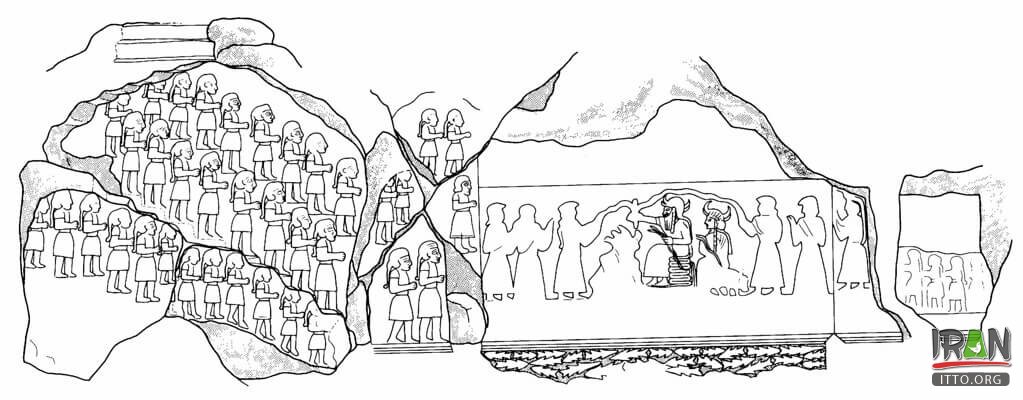Kurangun Relief is located in Fars Province of Iran and is a site of an Elamite rock reliefs. The bas-relief is important since it is the only Elamite bas-relief bearing images of the Elamite deities. The antiquity of these monuments dates back to the 3rd century BC. This relief shows a God with horned crown sitting on a throne. Behind him sits a goddess who is crowned in the same way. Both hold snakes in one hand, the animal that symbolizes the earth in the Elamite pantheon. Around these two deities, other characters are seen in outline. It's similar to Vishnu & Lakshmi in Vaikuntam.
The panel is separated from the floor by a set of three parallel lines, which separate the upper panel from many silhouettes of fish, which, although eroded, can still be distinguished and probably symbolize the Fahlian river down the cliff.

The bas-relief is important since it is the only Elamite bas-relief bearing images of the Elamite deities
The central panel dates to the seventeenth century BC and is carved in a rectangular frame. It shows a divine couple, sometimes identified as the god Inšušinak and goddess Napiriša.
The panels to the left and right were added in the eighth or seventh centuries and show processions of worshiping characters, all similar to each other, all facing the central scene. These characters are dressed in a fashion different from the gods, wearing typically Elamite clothes (hats with a tail falling down on the back, long coats, and wide trousers), all being represented in a humble praying attitude. This kind of composition is typically Elamite and evokes the reliefs carved in the same period at Kul-e Farah, near Izeh in the Khuzestan province. Another similarity is that all the available rocky surfaces were exploited.
This Rock Relief is located 20 km north-west from Nur-Abad (Noor Abad Mamasani) in the vicinity of Fahlian. There are engraved monuments known as "Sagmetro" or "Naqareh Khaneh" (the place where drums are beaten at stated intervals in a shrine). The relief was carved at the top of a rocky cliff named Kuh-e Paraweh (Korangoon Mountain), dominating the Fahlian river (Rud-e Fahlian) flowing in the valley of Dasht-e Rustam-e do. Its isolation from frequented roads, inaccessible for vandals, may explain its excellent state of conservation.


